Lowering Costs And Changing Testing Parameters With Advanced Systems
- By Sharad Matade
- April 17, 2025
The tyre industry is navigating a complex landscape of rising material costs, geopolitical uncertainties and fierce competition. In response, manufacturers are turning to automation, Industry 4.0 and AI-driven solutions to enhance efficiency and reduce operational expenses. Advanced testing and measurement systems are pivotal in this transition, offering cost-effective quality control, streamlined production and improved consistency. However, integrating these innovations poses challenges, including adapting to evolving tyre designs and meeting stricter OEM requirements. This article explores how technological advancements in tyre testing are reshaping the industry, ensuring performance precision and economic viability in an increasingly competitive market.
Increasing raw material prices, geopolitical crises, rising freight costs and stronger competition have led tyre companies to find ways to lower operational costs. Technological breakthroughs like automation, Industry 4.0, etc. are a boon in disguise in this hour of need. While automation is not a new concept, its usage gradually increases within the tyre industry, riding on the back of other advancements.
Micro-Poise Measurement Systems Division Vice President & Chief Technology Officer Dr Shaun M Immel believes that the ever-increasing need for automation and data connectivity to support Industry 4.0 is driving tyre manufacturers to adopt advanced measurement systems that lower inspection costs, enhance consistency and provide critical data for analytics.
“Simultaneously, manufacturers seek improved equipment throughput while maintaining high measurement quality to meet tightening tyre screening requirements. The growing variety of electric vehicle (EV) tyre designs necessitates greater measurement system flexibility to support a larger number of stock-keeping units (SKUs). Additionally, customers increasingly require user-friendly systems that accommodate inexperienced personnel by presenting simple-to-use and highly automated products,” he added while speaking exclusively to Tyre Trends.
The tyre testing industry has significantly transformed over the past five years. Automation cuts measurement and inspection costs while improving consistency and predictability, allowing manufacturers to redeploy labour to higher-value tasks. It also enables precise, data-driven decision-making by replacing subjective human evaluations with quantifiable metrics, ensuring better process control and continuous improvement.
As tyres grow larger and heavier, automation presents new challenges, but advancements in artificial intelligence (AI), faster processing power and GPU technology are making implementation more feasible and cost-effective. These innovations are fuelling a resurgence in automation, enhancing efficiency and providing manufacturers with deeper insights into production quality and performance.
However, he noted that while including sustainable materials within tyre compounds is strong founded within tyre makers, it is not likely to affect testing strongly. “The shift towards sustainable materials in tyre manufacturing is reshaping the industry. While this evolution may impact tyre design materials and manufacturing processes, it will not significantly alter the core processes of final finish testing. Testing equipment focuses on force variation, dynamic balance, X-ray analysis and geometry measurement, and it remains largely unaffected as long as tyre sizes stay within standard categories. However, as manufacturers integrate new compounds and materials, potential changes in tyre behaviour may lead to adjustments in testing methodologies to address emerging manufacturing challenges,” said Dr Immel.
PARADIGM EVOLUTION
The tyre industry is undergoing a strategic shift. Top-tier manufacturers are moving away from mass production to focus on high-performance and premium tyres, consolidating production into specialised plants for passenger, truck and OTR tyres. This shift is driven by increasing competition from Asian manufacturers dominating the mass-market segment. At the same time, some Asian players are pushing into the premium space, intensifying competition at the high end.
This evolving landscape reinforces the demand for precision testing, high measurement quality and faster throughput. “Our longstanding partnerships with tier-one manufacturers position us well in this premium market, particularly in the 18-inch-and-above segment, where measurement accuracy and reliability are critical and where Micro-Poise’s measurement systems excel. As the industry diversifies, we continue to enhance our equipment’s flexibility and feature set to meet the evolving needs of both established premium brands and emerging challengers,” said Dr Immel.
Furthermore, Dr Immel noted that the testing industry is undergoing significant advancements with a strong focus on increasing throughput while meeting increasingly stringent quality requirements. “Tyre manufacturers face tightening OEM screening limits, necessitating greater accuracy and repeatability in measurement systems to ensure precise and proper classification of tyres for various markets. Traditionally, higher throughput and improved measurement repeatability are a trade-off, but the industry is now working to improve both simultaneously, requiring innovative approaches,” he said.
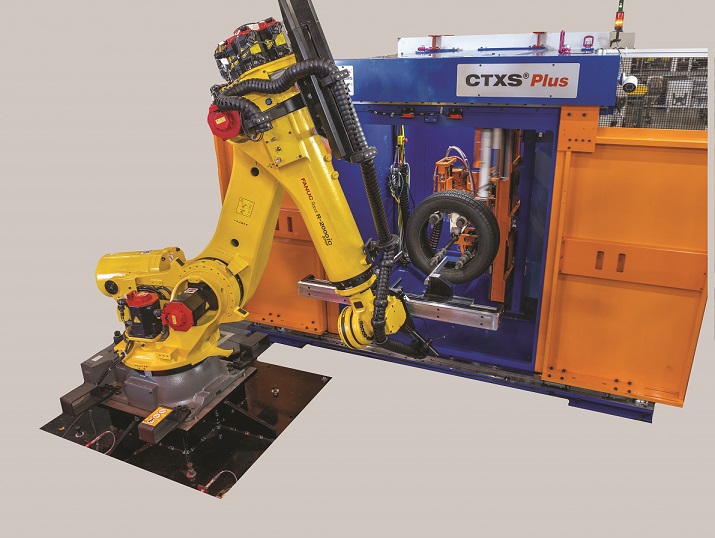
“A notable shift, particularly influenced by EVs, is the growing demand for higher frequency content in geometry and uniformity measurements. As EVs eliminate engine noise, tyres have become the dominant source of road noise, prompting manufacturers to analyse higher-frequency variations that could contribute to unwanted sound. These variations, often linked to tread design and tyre construction, are now being examined more closely for tyre-to-tyre variation to mitigate its impact,” he added.
He also contended that regulatory trends and market dynamics are driving further changes beyond noise control. The rise of EVs has significantly expanded the number of SKUs manufacturers must manage, pushing the need for greater equipment flexibility and quicker changeover.
“With tyre designs evolving rapidly, testing systems must adapt through quick-change tooling and advanced marking capabilities to accommodate frequent model shifts. At the same time, manufacturers continue to push for higher throughput without compromising measurement and inspection performance, reinforcing the need for cutting-edge solutions that balance speed, accuracy and adaptability in an increasingly complex landscape,” he added.
MEASURING PARAMETERS
According to Dr Immel, the time required to measure and assess a single tyre depends on the type of test(s) being conducted. A typical measurement cycle may range between 15 and 30 seconds, depending on the tyre size, the required tyre ‘warmup’ time, and the measurements being performed. The key to high-quality final finish equipment is to ensure high throughput while maintaining the measurement performance necessary for accurate quality assessments.
Explaining the quality measurement process, he said, “Quality measurement in tyre testing hinges on two fundamental aspects, accuracy and repeatability. Accuracy refers to each measurement’s ability to reflect the tyre’s true assessment value and characteristics, a non-trivial task given the inherent variability in production tyre measurement. Manufacturers rely on these values to determine whether a tyre meets quality standards or should be scrapped.”
Repeatability, on the other hand, measures measurement consistency. Sophisticated technology minimises measurement variations of production tyres, ensuring that the system can effectively differentiate between acceptable and defective products. The financial impact of incorrect classifications, whether approving a faulty tyre or rejecting a good one, is substantial, making excellent system measurement performance a critical factor in reducing long-term operational costs.
Answering what tyre screening limits are acceptable to the market, he said, “The acceptable limits are proprietary to each tyre manufacturer. Each manufacturer receives screening limits from original equipment (OE) manufacturers and select replacement market dealers. These OE and replacement screening limits vary across players. Beyond that, tyre companies often impose stricter internal limits to enhance quality, improve customer perception or differentiate products.”
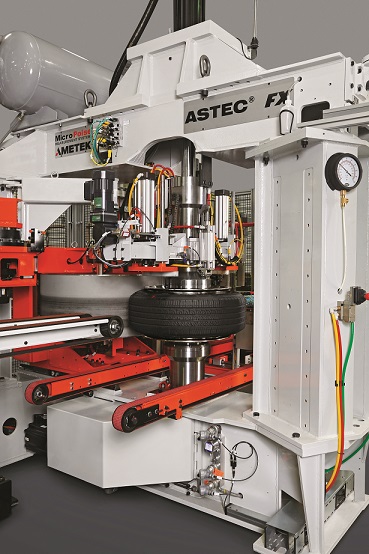 Alluding to whether the industry is more concerned about variation in passenger car tyres than in TBR or OTR tyres, he explained, “The industry is indeed more focused on variations in PCR, but I believe that’s largely due to volume. Passenger car tyres are produced in significantly higher numbers, and since they are consumer-facing products, expectations are much higher. People notice and care about ride quality, so manufacturers focus heavily on minimising tyre-to-tyre variations.”
Alluding to whether the industry is more concerned about variation in passenger car tyres than in TBR or OTR tyres, he explained, “The industry is indeed more focused on variations in PCR, but I believe that’s largely due to volume. Passenger car tyres are produced in significantly higher numbers, and since they are consumer-facing products, expectations are much higher. People notice and care about ride quality, so manufacturers focus heavily on minimising tyre-to-tyre variations.”
“However, even in the TBR segment, certain types like steer and drive tyres undergo strict testing and must meet high standards. Steer tyres, in particular, incorporate advanced technology because they directly impact vehicle handling and safety. Trailer tyres, on the other hand, face less scrutiny since they directly affect ride comfort. That said, manufacturers across all segments are under continuous pressure to tighten tolerances. OEMs and fleet operators are always pushing for lower limits, forcing tyre makers to improve,” he added.
The company is advancing tyre grading technology with a data-driven approach that moves beyond traditional tyre metrics. Developing and integrating alternative measurements aims to refine performance assessments, ensuring a closer correlation between lab results and real-world ride quality. This shift could boost product yields while maintaining more stringent standards, enabling a ‘smarter’ assessment of tyre quality.
When asked about the causes of early tyre failure and how geometry plays a role in identifying defects, he explained that issues in ply splicing during manufacturing can lead to structural weaknesses. If the ply material splice is left open, missing ply cords create a bulge defect when the tyre is inflated under high pressure.
This bulge, a critical measurement in quality control, appears radially along the sidewall and is a standard defect monitored by tyre manufacturers. If the bulge exceeds acceptable limits, it can cause the inner liner to become voided, leading to slow air loss and deflation – an irreparable but not necessarily catastrophic failure mode.
Dr Immel also noted that the company has developed several features to enhance flexibility. “We have an automatic rim change feature with adaptable tooling that streamlines adjustments. We’re also exploring innovations to improve changeover efficiency further. One of our key advantages is that when a tyre enters the system – even if it’s a single unit – we can immediately identify it, load the correct parameters and process it without any cycle time penalty. Unlike other machines requiring manual adjustments and extra cycle time, ours can handle small lot sizes and frequent model changes seamlessly,” informed Dr Immel.
When asked whether every tyre produced on the line is measured, Dr Immel explained that almost all OE tyres undergo screening to meet strict screening limits. For the replacement market, tyre manufacturers screen a varying percentage of products, depending on customer requirements and market strategy. While nearly 100 percent of OE tyres is tested, the extent of screening for replacement tyres varies across manufacturers and customers.
PRODUCT CATALOGUE
Micro-Poise Measuring Systems’ ASTEC FX system evaluates critical parameters such as force variation, while Micro-Poise’s TGIS FS system evaluates tyre runout and sidewall appearance. While these factors primarily influence ride comfort rather than direct safety, they play a role in detecting defects that could lead to premature tyre failure. “Some of these defects have been monitored for decades, forming an industry benchmark,” noted Dr Immel.
When discussing the process of force variation measurement, the executive compared a tyre to a system of parallel springs, where each section should ideally have the same spring constant or stiffness around the tyre. However, variations in manufacturing such as splices, component alignments and positioning errors can create inconsistencies, making certain areas stiffer or softer than others, resulting in a variation of the force the tyre induces into a vehicle while driving.
A load wheel presses into the tyres while it rotates to detect these variations, measuring force fluctuations. Higher force readings indicate stiffer areas, while lower ones suggest softer regions. This data is analysed using Fourier analysis, breaking it down into harmonics to help manufacturers ensure that force variation at certain frequencies remains within acceptable limits.
The US-headquartered company’s ITMS FX (Integrated Tire Measurement System) minimises testing cycle times while integrating and maintaining excellent measurement quality across force variation, dynamic balance and geometry measurements. In high-volume manufacturing, any cycle time advantage can significantly impact overall throughput, driving up the overall equipment value for the customer. “It’s always about how fast you can get the process done – get one tyre out, bring the next in and repeat,” Dr Immel explained.
Beyond speed, system reliability is equally important. Fully automated testing systems need to run continuously with minimal stoppages. “If a fault occurs, recovery must be instant,” he added. However, increasing speed without sacrificing measurement quality presents an inherent challenge.
The company’s Tire Geometry Inspection System (TGIS FS) integrates proprietary tyre-optimised 3D sensors to inspect sidewall geometry accurately. The system employs three strategically placed sensors in fixed locations – one each on the top lateral, radial and bottom lateral surfaces – to complete a full geometric scan in a single tyre revolution. The result is a micron-resolution contour of the entire tyre. This data supports defect detection, dimensional measurements and process optimisation. The system is adaptable across Micro-Poise’s force variation (uniformity), dynamic balance machines and various competitive equipment.
The company is reinforcing its position as the ‘automation partner of choice’ for tyre manufacturers, supported by the fact that it has always focused exclusively on final finish solutions. The company is driving towards fully automated ‘Lights Out’ operations, ensuring maximum efficiency and cost-effectiveness across all its products.
Key advancements include revolutionary throughput enhancements that significantly improve final finish processes without adding costs, ease-of-use innovations that simplify complex systems for less experienced operators and increased flexibility through automated changeovers to address the growing number of SKUs in tyre production.
Additionally, it is advancing automated inspection and defect detection by helping its customers shift from manual to autonomous inspection, which encompasses more precise numerical measurements, reduced errors and a reduction in overall inspection costs.
A major breakthrough in this area is the integration of AI and deep learning (DL) into its Coll-Tech Automatic Defect Recognition (ADR) software for tyre X-ray image analysis. Showcased at the 2024 Tire Tech Expo, the latest advancements have dramatically improved defect detection accuracy and responsiveness to customer configuration and customisation requests.
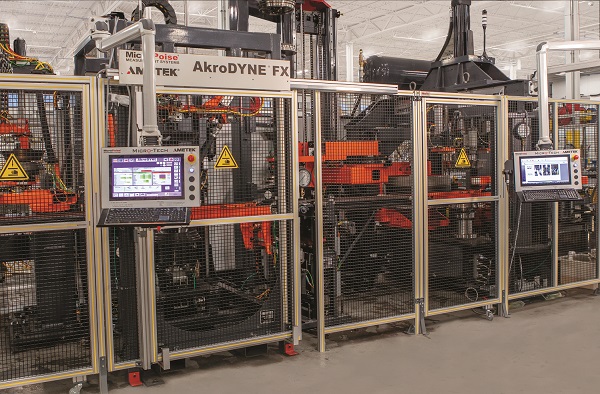
“Previously, algorithmic versions required extended response times for adaptation and modification, but the AI-driven enhancements have eliminated this delay. Multiple manufacturing facilities are now operating their ADR-equipped X-ray systems without human inspectors, allowing personnel to be redeployed elsewhere while significantly reducing inspection expenses. The transition to full autonomous inspection is a learning process that requires adaptation, but the investment yields substantial positive financial returns. Micro-Poise’s ADR system allows our customers to control the pace and number of steps in the journey to full autonomous inspection. To facilitate adoption, we offer image evaluations, follow-up consultations and in-plant demonstrations,” said Dr Immel.
Beyond inspection advancements, Micro-Poise has also improved tyre grinding systems, enhancing both functional system performance and the visual appearance of ground tyres.
Historically, tyre grinding – used for force variation and geometry optimisation – has been instrumental in converting rejected tyres into OE-grade products. However, some manufacturers hesitate to adopt grinding due to concerns about visible grind marks. Micro-Poise has addressed these concerns by refining the grind appearance and adding new functionalities that turn tyre grinding from an art into a precise science. These innovations increase product yield, improve tyre grading and deliver a strong return on investment for manufacturers. With AI-driven defect detection, automation advancements and improved tyre yield solutions, Micro-Poise is setting new standards for efficiency, accuracy and cost savings in the final finish stage of tyre manufacturing.
The company continuously refines its technology, balancing cost efficiency with high performance. “Customers request additional features based on unique measurement methodologies and defect detection requirements,” Dr Immel said.
Customers expect the machines to operate for decades. Mechanically, the company’s systems are built for longevity, but electronics and software evolve much faster. To address obsolescence, the company offers modular control system upgrades bundled with new features, ensuring customers gain added value while modernising their equipment and extending its lifecycle.
In the context of retrofitting, Dr Immel said, “We design machines to accommodate sensor and measurement upgrades, enabling customers to integrate new parameters without replacing entire systems. The balance lies in designing robust mechanical structures while allowing flexibility in electronics and software.”
ADDRESSING CHALLENGES
Developing intuitive, easy-to-use machines is an ongoing challenge. “Simplifying a machine while maintaining its capabilities is often harder than designing a complex system,” Dr Immel noted.
The company has invested in UX/UI enhancements to improve operator efficiency and ease of use.
Furthermore, the tyre industry is currently facing one of its most dynamic and challenging periods, driven by rapid technological advancements, shifting regulations, sustainability initiatives and the rise of EVs.
One of the biggest challenges is aligning new technologies with practical applications that benefit customers while ensuring their confidence in these innovations. AI and automation, for example, are transforming manufacturing processes, but their complexity can be daunting for tyre producers who must navigate ever-changing market demands.
Additionally, external factors such as tariffs, trade wars and regulatory changes add another layer of uncertainty, making it critical to choose the right technologies that will bring long-term value.
Sustainability is another key concern as tyre manufacturers work to reduce environmental impact through raw material innovations, renewable energy adoption and energy-efficient manufacturing processes.
While the company does not directly influence the chemical composition of tyres, it contributes to sustainability by designing testing and measurement equipment that uses less energy and air.
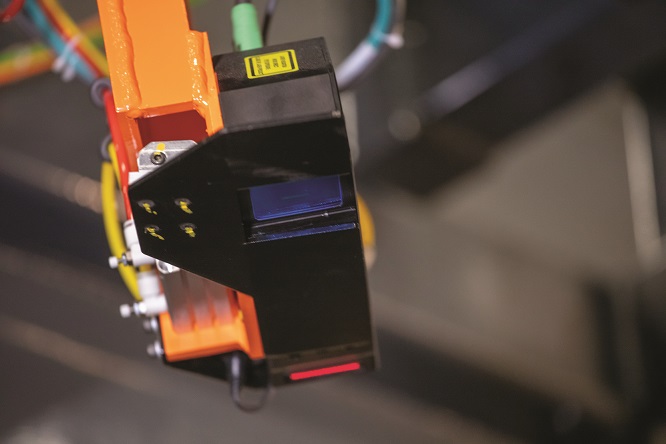
With AI-driven automation, faster cycle times and a strong focus on usability and upgradeability, it continues to push the boundaries of tyre testing technology. As the industry embraces data-driven solutions, the company remains at the forefront of precision measurement and defect detection.
FUTURE FOCUS
The industry is undoubtedly shifting towards fundamental measurement improvements and enhanced features like predictive maintenance, retrofitment and software upgrades.
“While reducing testing time and improving efficiency remain core priorities, there is an increasing demand for smart, automated solutions that can provide deeper insights into machine performance. Predictive maintenance is an exciting development area, but it is still in its early stages. The ultimate vision is to have intelligent software capable of real-time monitoring systems and predicting failures with precision. However, before reaching that stage, the focus is on establishing a solid data foundation and ensuring rapid recovery when issues arise,” averred Dr Immel.
To address these challenges, the industry is exploring soft sensor technology as a potential alternative to expensive hardware-based monitoring systems. These advancements could reduce reliance on physical sensors while still enabling predictive maintenance capabilities. As the industry moves forward, manufacturers must balance cost, efficiency and long-term viability to maximise the benefits of these innovations.
“The integration of AI and DL technologies is poised to continue, though adoption will likely be measured as manufacturers proceed with caution. While some advancements will prove transformative, others may fade over time. AI-driven systems can significantly improve productivity by shortening design and improvement cycles, making processes more efficient. Additionally, AI models can refine their accuracy over time through continuous feedback and training, leading to smarter and more effective applications in manufacturing,” he added.
He also noted that one key concern is the potential burden on customers. Some AI implementations risk shifting performance optimisation responsibilities such as defect evaluation, labelling and training onto end users. While this may be expected in later stages of adoption, it presents a significant challenge in the early phases, making seamless integration into existing workflows critical.
Another significant area of advancement is tyre grinding technology. While some manufacturers hesitate to use grinding due to concerns over visual imperfections, it remains a valuable and financially beneficial process for refining tyres that exceed variation limits.
Recent innovations aim to standardise and automate grinding, transforming it from an art into a precise, science-driven method. These advancements make the process more efficient and user-friendly, ensuring higher-quality output without compromising visual appearance. n
Micro-Poise TGIS FS Geometry Sensor
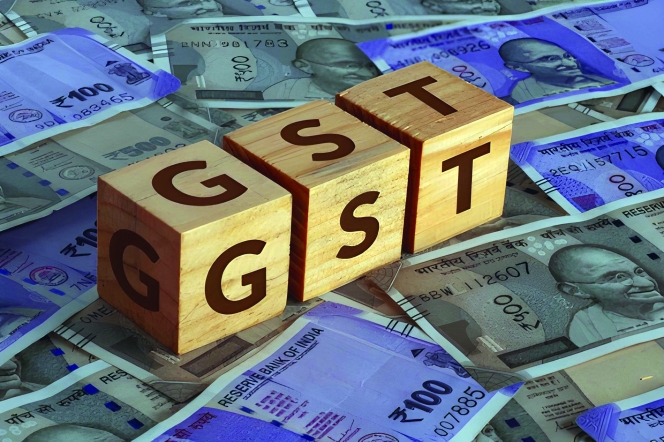
The rollout of GST 2.0 marks a defining moment in India’s economic journey – a reform that may well prove even more consequential than the original introduction of the Goods and Services Tax. Especially for a sector like tyres, the recent reduction in (GST) on tyres is far more than just a change in numbers. It is a transformative step that touches every wheel turning on India’s roads – from a farmer’s tractor to a trucker’s long-haul trailer and from a commuter’s scooter to a construction vehicle powering the nation’s infrastructure.
For years, tyres were taxed at 28 percent – the highest GST slab, clubbed with luxury and demerit goods. This categorisation never truly reflected the essential role tyres play in our everyday lives. Tyres are not a luxury. They are a fundamental enabler of mobility, supporting the movement of people and goods across cities, towns and villages. By bringing GST rates on tyres down to a more rational level, the government has addressed a long-standing anomaly and set the stage for widespread benefits across the economy.
The most visible impact of this move will be felt on the ground – literally. Lower GST means more affordable tyres for all users. Especially for transporters and fleet operators, tyres account for a significant chunk of vehicle running costs. A reduction in tax translates into lower replacement costs, freeing up working capital and improving operational margins. Farmers, small traders, delivery personnel, service providers, transporters – every segment that relies on mobility will feel this relief.
India has been working hard to bring down logistics costs, which are believed to be about 13–14 percent of GDP – much higher than global benchmarks. Tyres have a direct bearing on vehicle operating efficiency, fuel consumption and maintenance schedules. When tyres become more affordable, operators can replace tyres on time, and run vehicles more efficiently.
This naturally leads to lower logistics costs. Reduced logistics costs ripple across the value chain, helping industries move goods faster and at lower cost. This aligns perfectly with India’s ambition to become a more globally competitive manufacturing and trading hub.
Tyre industry’s story is not just urban – it’s deeply rural as well. Tractor tyres, power tiller tyres and tyres for animal-drawn vehicles are integral to the agricultural economy. A reduction in GST brings meaningful relief to farmers and small cultivators who rely on these tyres for their daily operations. By easing this cost, the government has extended direct support to rural mobility and agricultural productivity – an often underappreciated but critical outcome of this reform.
One of the most powerful yet often overlooked impacts of this decision lies in road safety. Worn-out tyres are a major cause of road accidents, particularly on highways. High replacement costs often lead to tyres being used well past their safe life.
With lower GST making new tyres more accessible, both individual motorists and commercial fleet owners are more likely to replace tyres on time, keeping vehicles safer and reducing accident risks. This complements the government’s broader road safety agenda, making highways not just faster but safer for everyone.
For the Indian tyre industry, which is one of the largest in the world, this reform is a game changer. It creates a more balanced tax structure, supports better cash flow, improves compliance and strengthens the competitiveness of domestic manufacturers. It will also encourage investment and capacity expansion, enabling the industry to serve growing domestic demand and tap export opportunities more effectively.
The GST reduction on tyres is a strategic, forward-looking policy decision that will benefit the entire mobility ecosystem. It acknowledges the essential role tyres play – not just as a product, but as a critical enabler of transportation, logistics, rural livelihoods and road safety.
As this reform takes root, its positive impact will be felt by consumers, businesses, farmers and industries alike. The tyre industry, represented by ATMA, welcomes this move wholeheartedly and remains committed to working alongside the government to strengthen India’s journey towards affordable, efficient and safe mobility for all.
The author is Director General of the New Delhi-based tyre industry association, Automotive Tyre Manufacturers’ Association (ATMA).The views expressed here are personal.
WACKER Secures Gold Medal In EcoVadis Sustainability Rating
- By TT News
- December 18, 2025
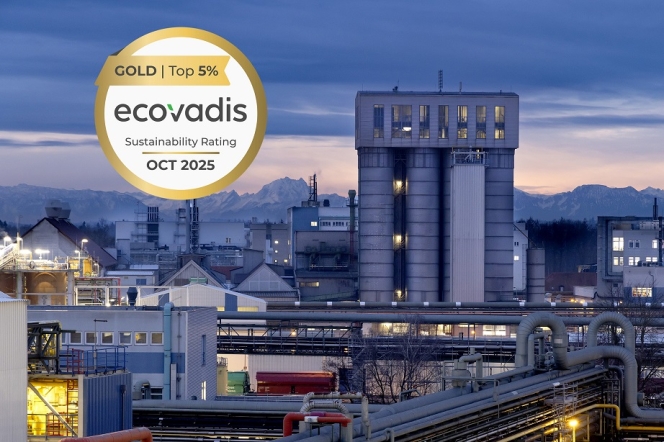
WACKER has earned the 2025 Gold Medal from the independent rating agency EcoVadis, marking its continued recognition for sustainable practices and responsible corporate governance. This distinction places the company within the top five percent of all businesses assessed by EcoVadis (over 1,000 companies globally). WACKER's overall score improved from 77 points (in 2024) to 79 points, driven largely by enhanced reporting and concrete actions focused on Scope 3 emissions and ethical standards.
The EcoVadis assessment measures the quality of a company’s sustainability management through a methodology grounded in international frameworks like the Global Reporting Initiative, the UN Global Compact and ISO 26000. Performance is scored from 0 to 100 across four core areas: environment, labour and human rights, ethics and sustainable procurement, using 21 specific indicators.
In line with its commitment, WACKER provides its EcoVadis evaluation to customers as a standardised and credible validation of its sustainability efforts. The company has also defined ambitious climate targets, aiming to halve its absolute greenhouse gas emissions by 2030 relative to 2020 levels. Progress is already evident, with a 30 percent reduction achieved as of 2024. Looking further ahead, WACKER strives to reach net-zero emissions across its operations by the year 2045.
Peter Gigler, Head of Corporate ESG, WACKER, said, “The result confirms our initiatives in many key areas. It provides our customers with invaluable proof.”
Craig Borman Appointed As Head Of OTR At BKT USA
- By TT News
- December 18, 2025
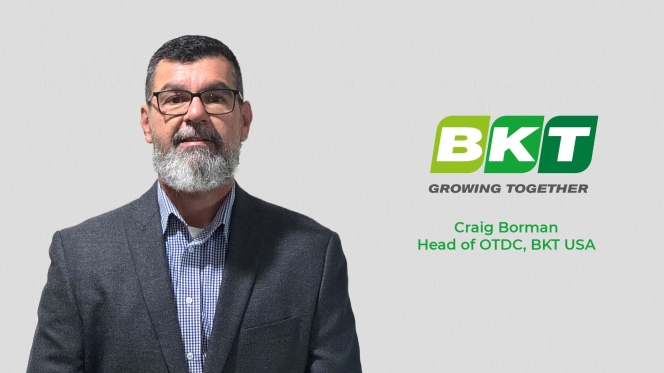
Balkrishna Industries Ltd (BKT Tires), a global leader in off-highway tyre manufacturing, has appointed Craig Borman as Head of OTR at BKT USA. The appointment is in line with BKT’s long-term strategy through 2030.
Borman brings with him 20 years of experience across off-road equipment, tyres and rubber tracks. He will play a key role in leading BKT USA's OTR team and expanding the company's presence in this market while increasing awareness of the value and dependability of BKT's range of products.
Borman said, “I’m extremely excited to join the BKT family and to build off the successes that this team has already achieved. I look forward to engaging with our partners, determining how we can accelerate our mutual growth and working towards achieving BKT’s vision of being a recognised leader in the OTR segment.”
Christian Kötz To Succeed Nikolai Setzer As Continental CEO In Planned Handover
- By TT News
- December 18, 2025
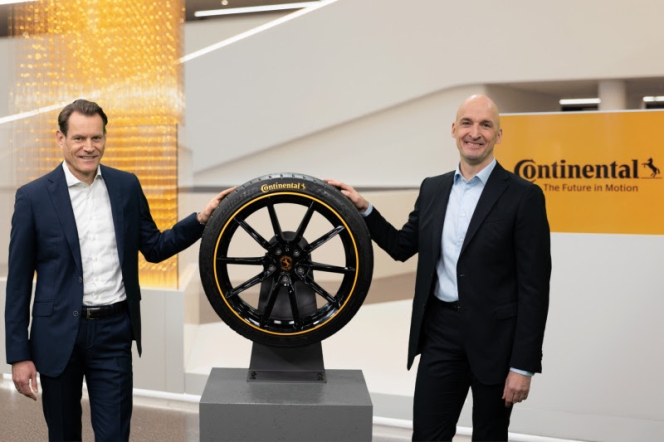
The Supervisory Board of Continental AG confirmed a significant leadership transition during its meeting on 17 December 2025. Christian Kötz will be appointed as the new Chairman of the Executive Board and Chief Executive Officer, effective 1 January 2026. He succeeds Nikolai Setzer, who will step down from the Executive Board on 31 December 2025. Setzer's departure follows more than 16 years as a board member, including the last five years in the CEO role, and occurs by mutual agreement as the company reaches a pivotal point in its strategic evolution.
This planned change in leadership aligns with the substantial progress Continental has made in its transformation into a pure-play tyre company. Major structural milestones have been achieved, including the spin-off of Aumovio and the signing of an agreement to sell the Original Equipment Solutions (OESL) business area. Regarding the planned 2026 sale of ContiTech, internal preparations are largely complete. The market outreach phase has concluded, and a structured sales process is scheduled to begin in January 2026, setting the stage for the final step in the corporate realignment.
Kötz’s extensive background within the tyre business, dating back to 1996, positions him to lead this final phase. A member of the Executive Board since 2019, his previous leadership roles within the Tires group sector included responsibility for the passenger car tyre replacement business in the EMEA region, the original equipment and commercial vehicle tyre business units and global research and development for passenger car tyres. His many years of trusted collaboration with Nikolai Setzer are expected to ensure continuity during the transition.
Kötz will lead an Executive Board comprising several key figures. Alongside him and Philip Nelles, who has headed the ContiTech group sector since 2021, are Roland Welzbacher and Ulrike Hintze. Welzbacher joined the board in August 2025 and assumed the role of Chief Financial Officer on 1 October 2025. Hintze was appointed to the board on 1 July 2025, serving as Chief Human Resources Officer and Director of Labour Relations. This board will be responsible for driving the tyre business forward, completing the corporate realignment and, following the sale of ContiTech, integrating the remaining group functions into the tyre organisation.
Wolfgang Reitzle, Chairman of Continental’s Supervisory Board, said, “Nikolai Setzer has been instrumental in shaping Continental, realigning the organisation and paving the way for three strong, independent companies. For this, he has the thanks of the entire Supervisory Board as well as my personal gratitude. With this handover, we are consolidating responsibility for the tyre business, the realignment and the remaining tasks of the group functions in one role. Christian Kötz is one of the most distinguished managers in the global tyre industry. With his extensive experience and passion for Continental, we firmly believe he is the right choice to lead the company successfully into the future.”
Setzer said, “In recent years, we have succeeded in transforming a diverse portfolio of businesses into three strong, independent champions. After 28 years at Continental, now is the right time for me to hand over responsibility to Christian Kötz. I’m extremely grateful for the journey we’ve all shared and proud of what we’ve all achieved together. I firmly believe that the tyre business, ContiTech, Aumovio and OESL have a promising future ahead.”
Kötz said, “I would like to thank the Supervisory Board for its trust and am excited about this new responsibility. Continental has been my professional home for three decades. Together with the Executive Board team and all colleagues throughout the company, we will complete the realignment and continue the success story of our tyre business.”







Comments (0)
ADD COMMENT